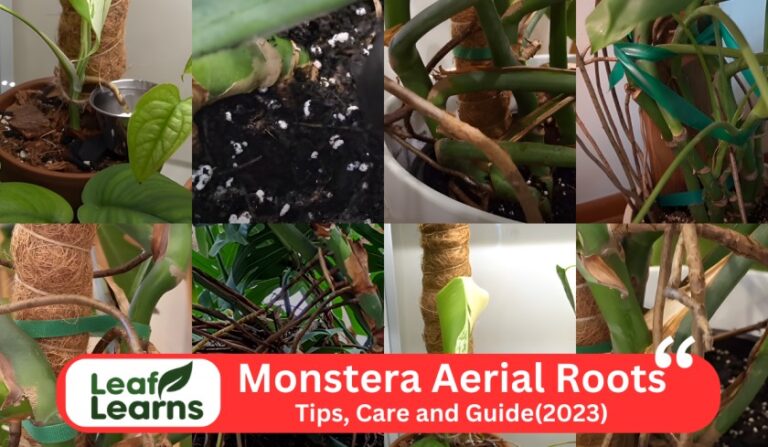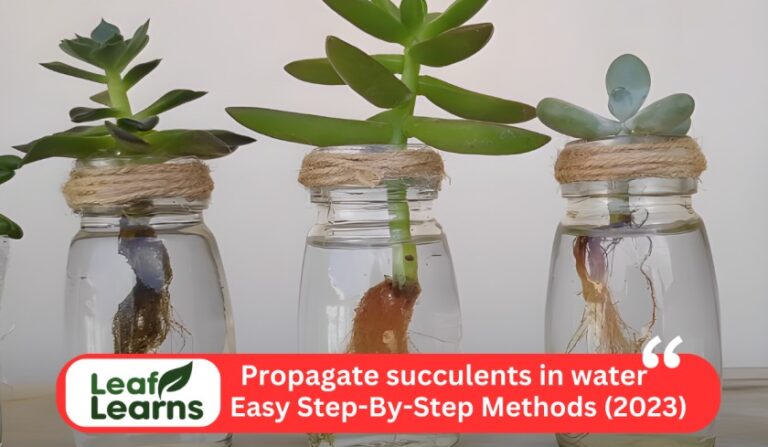How to Propagate Indoor Plants by Stem Cuttings in Water
Indoor plants increase the beauty and feel of nature in our homes while improving air quality and general well-being. To propagate Indoor Plants by Stem Cuttings in Water is an enjoyable and affordable approach to growing your collection.
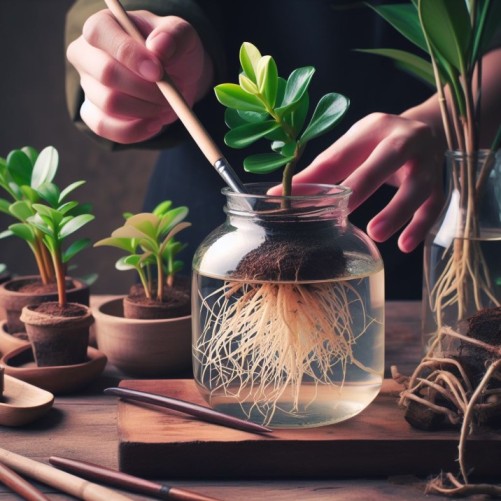
This simple propagation technique enables you to grow new plants from existing ones, resulting in a rich and healthy indoor garden. We’ll talk you through the process of Propagate indoor plants by stem cuttings in water in detail in this article:
| Method | Water Propagation |
| Plants | Stem cutting |
| Steps | Cut the stem, place in water, Change to soil |
| Time | Weeks |
| Benefits | Easy, Root Growth |
| Example Plants | Pothos, Spider plant and Philodendron |
Contents
Pro Tip: Cut stems on an angle
Cut stem cuttings at a little slant while taking them for propagation.
This improves root growth and increases surface area for water absorption, improving the likelihood of successful propagation.
Plants list that Propagate Indoor Plants by Stem Cuttings in Water
Certainly, here is a list of some common plants that can be propagated in water:
- Pothos (Epipremnum aureum)
- Spider Plant (Chlorophytum comosum)
- Chinese Money Plant (Pilea peperomioides)
- Snake Plant (Sansevieria trifasciata)
- Coleus (Plectranthus scutellarioides)
- African Violet (Saintpaulia spp.)
- Philodendron (Philodendron spp.)
- Basil (Ocimum basilicum)
- Mint (Mentha spp.)
- Rosemary (Rosmarinus officinalis)
Materials You’ll Need
- Before you begin the propagation process, gather the following materials:
- Pruning shears or sharp scissors
- A healthy parent plant
- Clean, sterilized glass or plastic container (with a lid or plastic wrap)
- Clean, fresh water (filtered or distilled water is best)
- Rooting hormone (optional)
- Paper towels (for cleaning and drying your cutting tools)
Step-by-Step Guide to Propagate Indoor Plants in Water
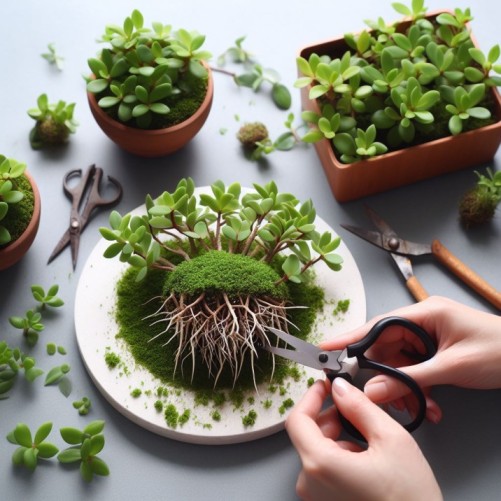
Selecting the Right Indoor Plants
- Selecting healthy parent plants is the first step in employing stem cuttings in water to produce indoor plants. Pick plants with robust, colorful stems that are free of disease.
- For this technique, look for indoor plant species like pothos, spider plants, or snake plants. Parent plants that are healthy should have thick leaves and be free of stress or pests.
- Next, take a cutting from the parent plant that is between 4 and 6 inches long, right below a leaf node. Place the cutting in a jar of water after clearing away any leaves from the cutting’s bottom.
Preparing Your Workspace
- Stem cuttings in water are an effective method of indoor plant multiplication, but only when done in a clean, sterile environment.
- Disease risk is decreased and good growth is ensured in a clean atmosphere. These easy methods may be used to sterilize equipment and containers:
- Cleaning is essential: To avoid contamination, carefully wash your hands before touching plants or machinery.
- Containers: To store water for cuttings, use clean, clear glass jars or containers. Rinse them well after washing them with hot water and soap.
- Tools: To stop the spread of diseases, disinfect pruning shears or scissors with rubbing alcohol or hydrogen peroxide.
Taking and Preparing the Cuttings
- Growing new indoor plants is made simple by taking stem cuttings from a parent plant. Pick a parent plant that is healthy and has sturdy stems first. Just below a leaf node, where roots will eventually grow, cut a 4-6 inch piece using clean scissors or a knife.
- To avoid rot, remove any extra leaves from the lowest part of the cutting. To encourage root development, you might dip the cut end in rooting hormone.
- After that, put the cutting in a jar or vase and fill it with water so that the leafless part is submerged.
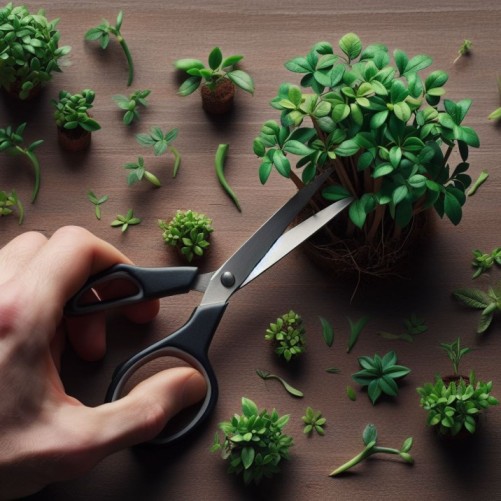
Placing Cuttings in Water
- Place the cutting in a container with water, covering the nodes that will be submerged. The container should be kept in a well-lit place, but away from direct sunlight.
- Stress the significance of water quality and the necessity of changing it frequently:
- To protect the clippings from any injury, use water that is pure and chlorine-free. To keep the water fresh and promote root growth, change it every few days. This guarantees a favorable environment for effective reproduction.
Monitoring Root Development
- Understanding root growth and taking good care of the cuttings are essential when reproducing indoor plants from stem cuttings in water.
- Root Development Timeline:
- Usually, roots begin to grow after 1-2 weeks. Look for little white lumps that will develop into roots at the cut end. Roots that are healthy will eventually grow longer and thicker.
- Advice on Care:
- To avoid rot and guarantee an adequate supply of oxygen, change the water often (every 3-5 days).
- Avoid direct sunlight and keep the cutting area under indirect light.
- Keep the space at a comfortable temperature.
- Developing roots might take a few weeks to a few months, so be patient.
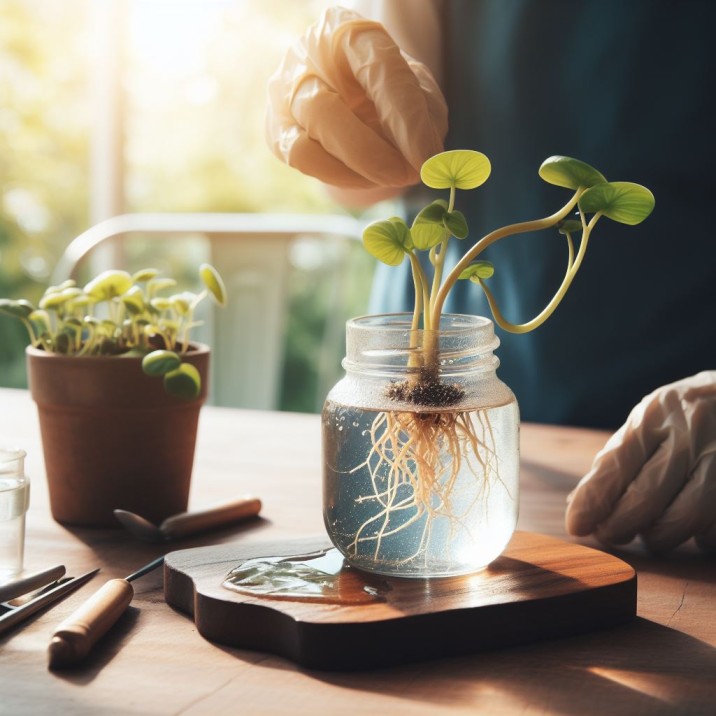
Transplanting the Cuttings
- Transplant the cuttings into soil or another suitable growth media as soon as you notice roots emerging (typically in a few weeks).
- To avoid damaging the roots, handle them delicately. The young plant’s health and growth depend on this stage.
Caring for Your New Plants
- It’s essential to make sure the young plants flourish following transplanting when growing indoor plants from stem cuttings in water. To take care of them
- Light: To encourage development, place the cuttings in indirect sunlight; however, stay away from direct sunlight, which can burn the roots.
- Water: Regular water changes are necessary to avoid root rot and stagnation. To prevent stunting the plants, use water that is at a normal temperature.
- Maintain a humid atmosphere by using a humidity tray or covering the cuttings with a plastic bag.
- Donate carefully: Move the cuttings to the soil once roots have formed, making sure that the potting mix has good drainage. If you can do more care about this plant you will get good rezults.

Troubleshooting Common Issues
- Dealing with Rot: If the cutting is immersed too deeply, rot may develop. Keep the water level slightly below the node of the cutting, where roots will grow, to avoid this. Every one to two weeks, change the water to prevent stagnant situations.
- Pest control: Keep an eye out for pests like mold or fungus gnats. Use pure, clear water, and stay away from densely packed clippings. To ward off bugs, you may also use a sprinkle of dish soap.
- Slow Root Development: Be patient and make sure the cutting receives adequate light but not direct sunlight if roots are taking too long to form. Additionally, using a rooting hormone helps hasten the formation of roots.
When To Take Cuttings
Early Morning:In general, early morning is the optimum time to take cuttings since the plant is well-hydrated and not stressed by heat or direct sunshine
During Active Growth: Pick a period when the plant is actively growing, which for most plants is usually in the spring or early summer. They have the most energy available for root formation at this time.
Healthy Growth: Choose stems that are sound, unharmed, free of illness or injury, and devoid of any buds or blossoms. These stems have a higher chance of taking root.
Non-Woody Growth: Take cuttings from non-woody, supple, green stems for the majority of plants. It might be more difficult to root woody stems in water.
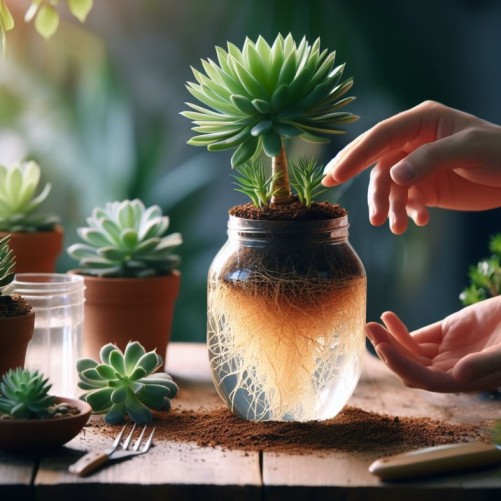
The Importance of Proper Plant Care
To propagate indoor plants successfully, you can utilize a variety of methods, including stem cuttings and leaves in water or soil, and even experiment with uncommon mediums like bottled water or water bottles. While some may choose to propagate in cold water, others prefer a drier approach, allowing stem cuttings to grow roots in water.
For a more direct approach, you can propagate indoor plants by placing stem cuttings directly in water. Throughout this journey of propagation, having propagation supports, like a propagator or an indoor proxy garden, can prove invaluable.
Don’t be discouraged by propagation storms or uncertainties; use your propagation VR to navigate through this exciting process. From XSora to indoor plant propagation kits, the world of indoor plant propagation offers a wide array of possibilities.
Whether you’re in Australia, Pakistan, or any other region, indoor plants offer endless opportunities for propagation. Experiment with house plant cutting propagation, try your hand at propagating monstera or indoor pineapple plants and don’t forget to explore the propagation of indoor plants in water or even the unique world of propagating plants in a greenhouse.
With patience and care, you’ll discover the joys of growing and propagating indoor plants.
Conclusion
A gratifying and economical technique to grow your indoor garden is through stem-cutting propagation in water. Your indoor sanctuary may grow and prosper if you have a little time and care to create new plants from your current ones.
Grab your scissors, pick your parent plant, and start your propagation journey for indoor plants now. Enjoy your garden.
FAQs
What is plant propagation?
Plant propagation is the process of creating new plants from existing ones, crucial for gardening, horticulture, and agriculture.
How long does it take for cuttings to root in water?
The time varies by plant species, but typically it can take 2-4 weeks for some, 4-8 weeks for others, and several months for certain plants.
Can you grow plant cuttings in just water?
Yes, many plant cuttings can be successfully grown in water before transplanting into soil, promoting root development in a simple and effective manner.



